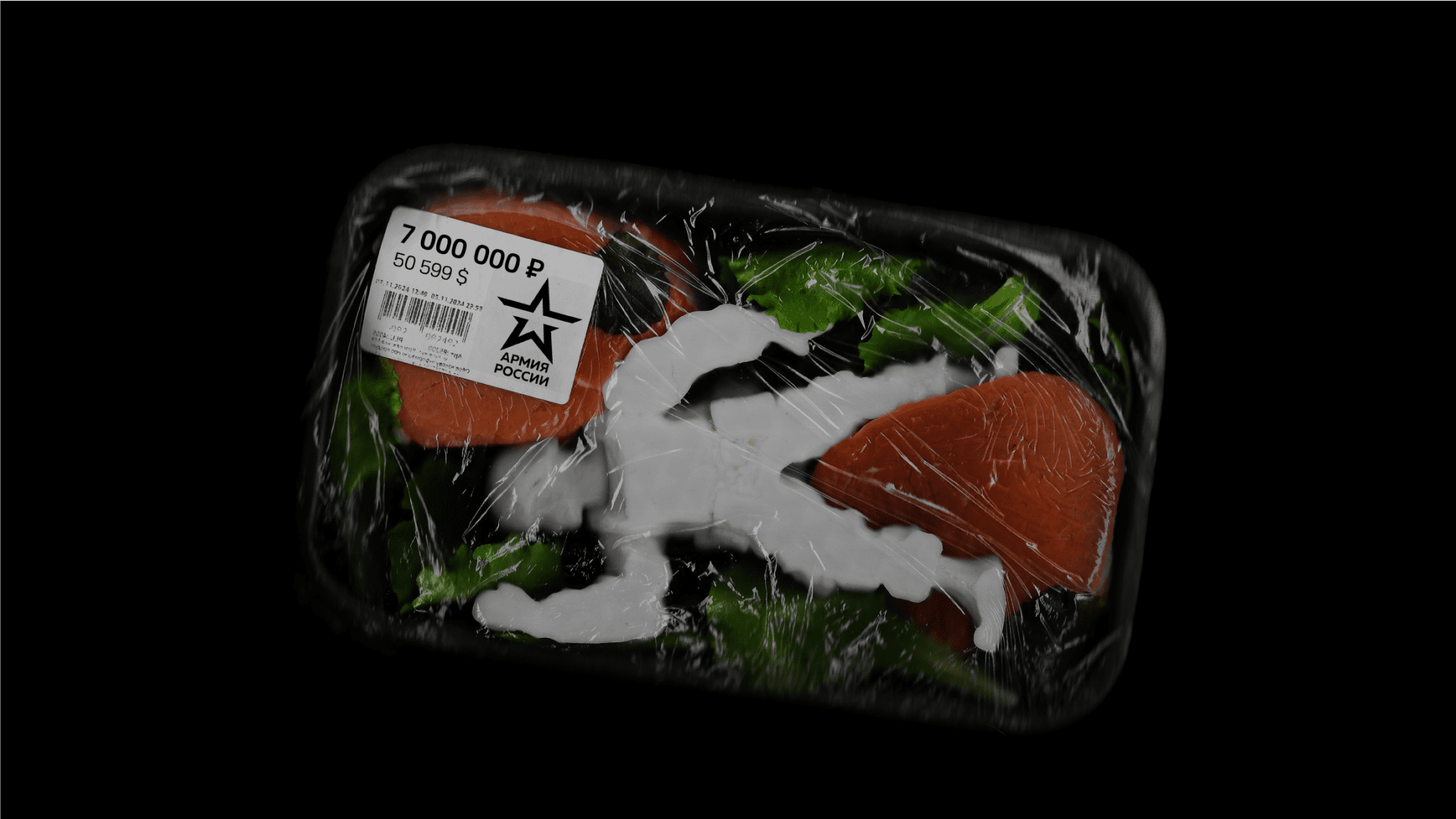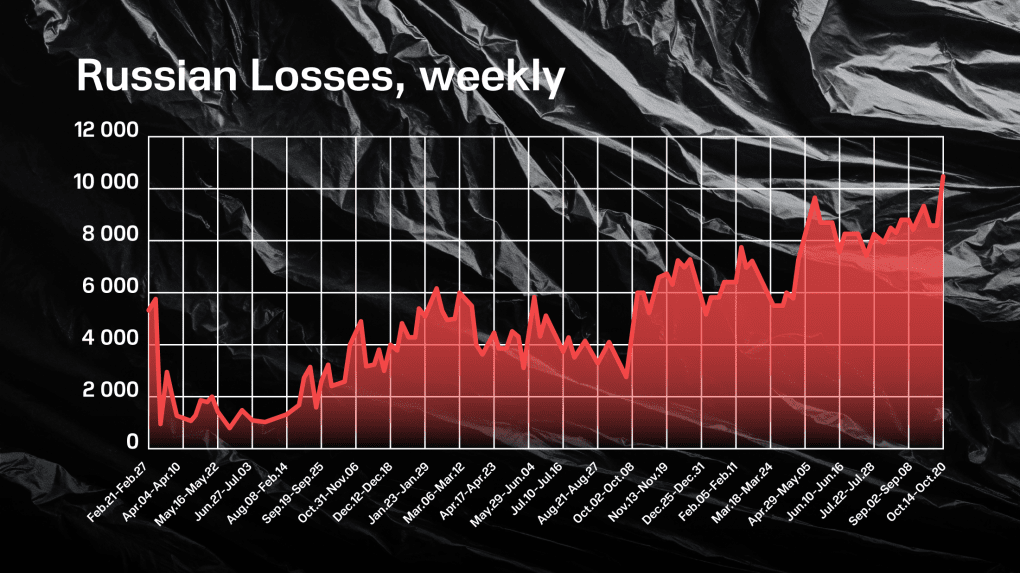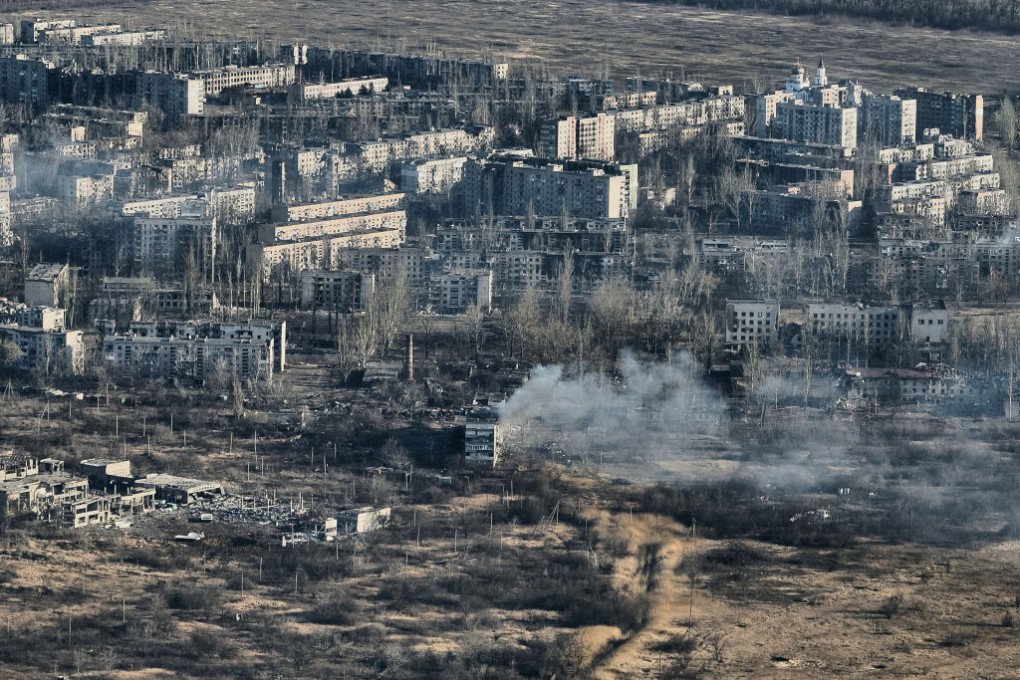- Category
- War in Ukraine
Russia’s Personnel Losses Are at Their Highest Since 2022, with 700,000 Killed and Wounded

Russia is deploying increasing numbers of infantry units into battle, disregarding the casualties. Daily reports of killed and wounded exceed 1,000 soldiers.
Ukrainian President Volodymyr Zelenskyy provided updated numbers on Russian losses: since the start of the full-scale invasion, Russia’s irrecoverable losses have reached 650,000 people. This figure includes both those killed and severely wounded who will not be able to return to the battlefield. Right now its more than 700,000 people.
Russia’s losses have increased by 30% in less than six months. On May 24, 2024, Ukraine’s General Staff reported 500,000 irrecoverable losses in the Russian army since the start of the full-scale invasion. But the rate of casualties has since accelerated.
The primary reason is the extensive use of infantry in assaults on Ukrainian positions. In 2024, Ukrainian military sources noted that the Russian army changed its tactics: small groups of 2-4 soldiers are sent into battle with the aim of quickly capturing a position, consolidating a force there (up to 20-30 soldiers), and pushing further. This shift in tactics occurred due to the widespread use of FPV drones, which quickly destroy heavy equipment, making it less effective: large tank and BMP columns can be swiftly destroyed and rendered ineffective on the battlefield. As a result, infantry has become a key element of their advances, especially when they disregard losses.

One early example of this shift in tactics was the assault on Avdiivka, where, according to General Staff officials, the Russian army deployed a group of 120,000 soldiers, with irrecoverable losses amounting to between 47,000 and 50,000 soldiers.
Ukraine’s General Staff publishes Russian army losses daily, and a marked increase in fatalities has been observed. On average, the number of daily killed and wounded has grown by at least a third, now significantly exceeding 1,000.
One of the reasons is Russia’s “meat grinder” tactics.
Fighters from the Ukrainian unit "Liut," defending Toretsk, told journalists from UNITED24 Media in October that Russians deploy infantry without regard for casualties. Groups of a few soldiers are repeatedly sent to capture Ukrainian positions, and no matter how many are killed, replacements are sent. It could be 20-30 or even 100 soldiers, taking the same route, hoping to capture just one position. “I’ve never seen anything like it; there’s so many of them, it seems endless,” one soldier told us. This tactic shift has led to massive losses, but Russia sees results and continues with this approach.
Such infantry assaults are an old Soviet and Russian tradition, used by Tsarist Russia in World War I and later by Stalin in World War II. The Soviet Union, with its vast human resources, didn’t spare soldiers: in every major battle against Germany, the Soviet Union had multiple times more casualties, deploying significantly larger forces. For instance, during the Battle of Moscow in 1941-1942, around 7 million soldiers fought on both sides. Soviet losses, including killed and wounded, amounted to about 1.9 million, while German losses were around 600,000.
Ultimately, the Soviet tradition has become a reality for today’s Kremlin, which sends more soldiers into the war. According to the Commander-in-Chief of the Ukrainian Army, Oleksandr Syrskyi, Russia continues to increase the forces involved in the war, planning to involve up to 690,000 soldiers.

The mobilization process is driven by substantial financial incentives. New soldiers are promised payments from $4,000 to $20,000, depending on the region, with death benefits reaching up to $150,000. This attracts more Russian men to enlist, often for one-way journeys. At the same time, significant financial incentives transform entire regions, reducing the inclination of ordinary Russians to protest against the war—their lives become better and wealthier, allowing them to buy homes, cars, and jewelry. This lifestyle change is accepted, even if it means losing a son, husband, or father.
Russian losses will likely continue to rise. Supplying Ukraine with F-16 aircraft and air-to-air missiles will help push Russian aviation away from the front line, reducing the bombardment of Ukrainian positions with guided bombs—one of the deadliest types of weapons against Ukrainian positions. This would increase pressure on Russian infantry, forcing them to send even more soldiers into battle. Ukraine needs not only aircraft but also artillery ammunition, mortar rounds, and reconnaissance drones to more effectively counter enemy infantry.
-29a1a43aba23f9bb779a1ac8b98d2121.jpeg)
-6359eca46c72bde40a90abaaadd6eaa8.png)


-206008aed5f329e86c52788e3e423f23.jpg)
